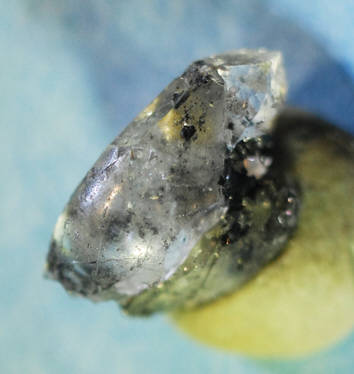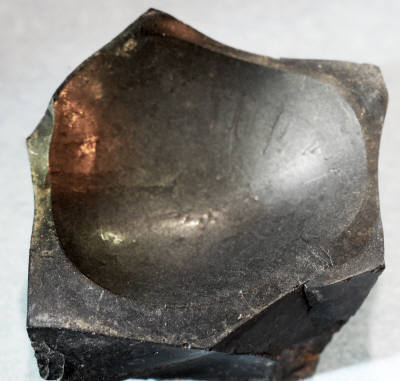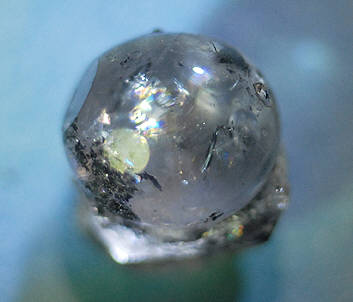
Best Website for Herkimer Diamond Information
Last Updated:

About this Webpage:


Free Website Where Herkimer Diamond Enthusiasts Share Information with the Public
Scroll down
Dr.C. did two talks at the Herkimer Diamond Festival (July)which are in a Youtube movie. The research on the Herkimer District is in need of samples and photos.
How can you help? Visit the "how to help" page.

Quartz spheres are unique to the Herkimer district and are evidence for the oil and seed crystal theory. They are very small, always less then 10 mm across and they are always in pockets with hydrocarbon.
Below are photos and a discussion of these spheres and other curved quartz features found in the Herkimer district.




The Quartz Spheres
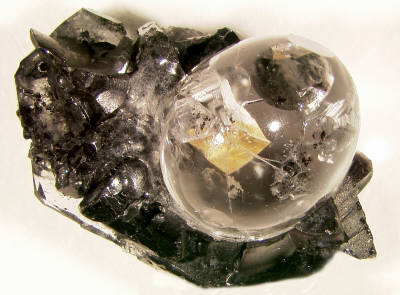
This is the classic way that the spheres occur. They are encased in black hydrocarbon. They have a slighly frosted surface except for these prefectly round, flat, areas on the sphere. These areas are like polished glass. The length of this specimen is 1.5 cm., from the TCR mine owners collection (2008). All of the spheres on this web page are from the TCR mine, which for now is the only location reporting having found them. Based on the oil and seed crystal theory, these spheres should occur in another Herkimer mine.
The golden rhomb is most likely dolomite and an added beauty to this specimen.
In the two photos below one can see the variety of sizes and shapes of these spheres. Each photo is 2 cm across.
The flat surfaces on the spheres were puzzeling until I photographed the sphere below (7 mm top to bottom). Most of the spheres only show one to 4 of these flat surfaces but the sphere below shows many more. You can see that there are three flat surfaces on the top, three in the middle, and two of what should be three on the bottom. What we are probably looking is half of the six hexagonal faces of a quartz crystal. The other half would be on the back of this sphere, if they were developed, giving us 6 flat surfaces on top, 6 across the middle, and 6 around the bottom. (Photo Dr.C., 2009)

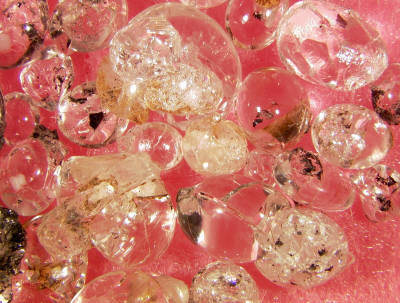

Other Curved Quartz Features

Although the TCR deposit may currently have exclusive rights to the occurrence of quartz spheres, there are other curved features throughout the district that are probably related to the same, or similar, processes.
There is another very circular feature found associated with Herkimer diamonds - circular impressions on the outside of crystals. Below you can see the faces and edges of a Herkimer diamond. On those faces are round impressions. The phenomenon that caused these is likely related to the same phenomenon that helped form the quartz spheres. At the arrow you can see the relationship between the faces of the crystal and the effects of the circular phenomena. The crystal obviously had the room to grow into what ever created the circular feature. (Specimen from N. Adams Bob, from Fonda, NY (DA) loaned for photography 2009).
It is difficult to naturally make round spheres of clear quartz. Were these water worn, like pebbles on a beach? There seems to be no evidence to support that, especially when we can see very well formed flat features on the spheres that are smooth as glass. Did these form by some natural accretion process during the time when the sediments were being made - like the way a pearl is made? There is no evidence of layering in these spheres like one finds in a pearl. The most likely explanation is that these were formed inside nearly perfect spherical cavities. These spherical cavities were inside the black carbon material, hydrocarbon, and the quartz filled in those spherical cavities leaving behind spheres.
How can you make nearly perfectly spherical cavities inside the hydrocarbon? The best explanation is that at one time the material was viscous, slightly fluid, like thick syrup. It was likely oil. This oil contained gas bubbles and as the oil became hardened the bubbles were trapped, the hydrocarbon hardened and the bubble left behind a spherical cavity. The quartz then found its way along the porus layers in the rock (layers filled with holes) and into the spherical cavity contained within the solidified oil. The quartz then filled in the bubble cavity making the sphere. We then find the quartz spheres totally encased in carbon material and not anywhere else.
These quartz spheres are some of the best physical evidence within the Herkimer district that oil was present and influenced the history of how Herkimer diamonds were made. It is difficult to generate a more plausible theory, particularly given that gas deposits are found in the Finger Lakes region with similar dolomite wall rock alteration features. It is likely that there were several episodes of oil migration and several episodes of quartz events. It is also likely that the intensity/timing and flow direction of these oil events, in relation to the Herkimer diamonds, varies across the district (as do all the fluid migration events) resulting in variations within the deposits across the Herkimer district.
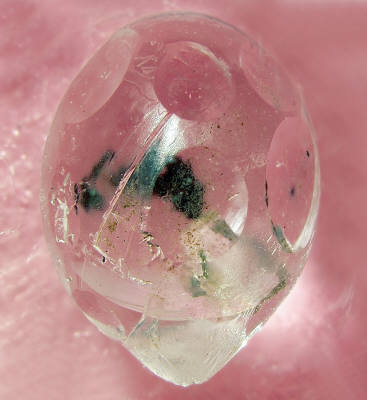

Below left is a picture showing a series of quartz domes that were surrounded by hydrocarbon. For scale you can just see the edge of the same ruler used in the bottom right photo. These domes are small, like the spheres. From Fonda, NY (DA - 2007). Photo Dr. C. 2009
Below right is a large curved surface on a crystal that was packed in hydrocarbon. Note the attempt to form a termination (bottom left of photo). Fonda, NY (DA - 2008) specimen donated by "Deputy Mike". Photo Dr.C.
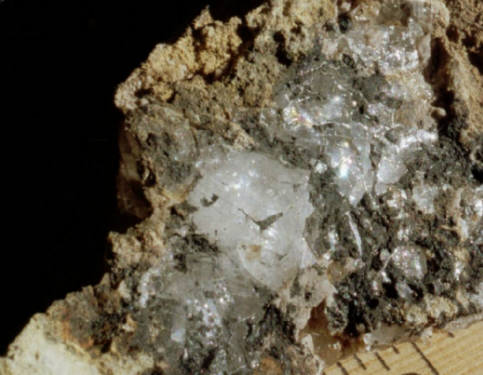
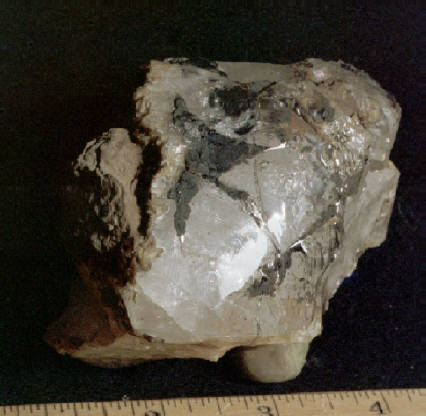
W. David Hoisington, Ph.D.
Dec., 2011
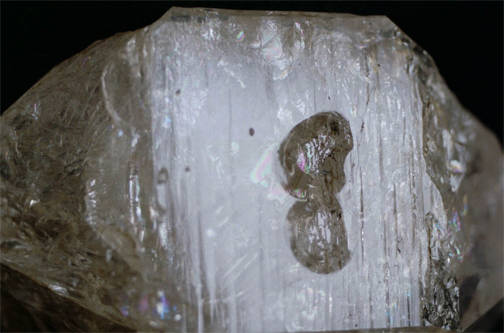
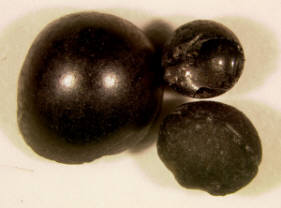
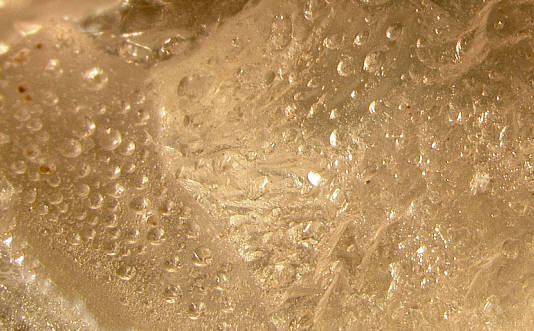
Curved "Dimple" Features
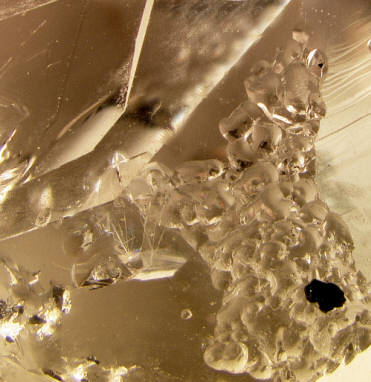
These three photos of curved "dimple" features show fairly large ones (top), small ones (top right) and microscopic (bottom right). They are probably all due to quartz growing into hydrocarbon spheres like those below.
